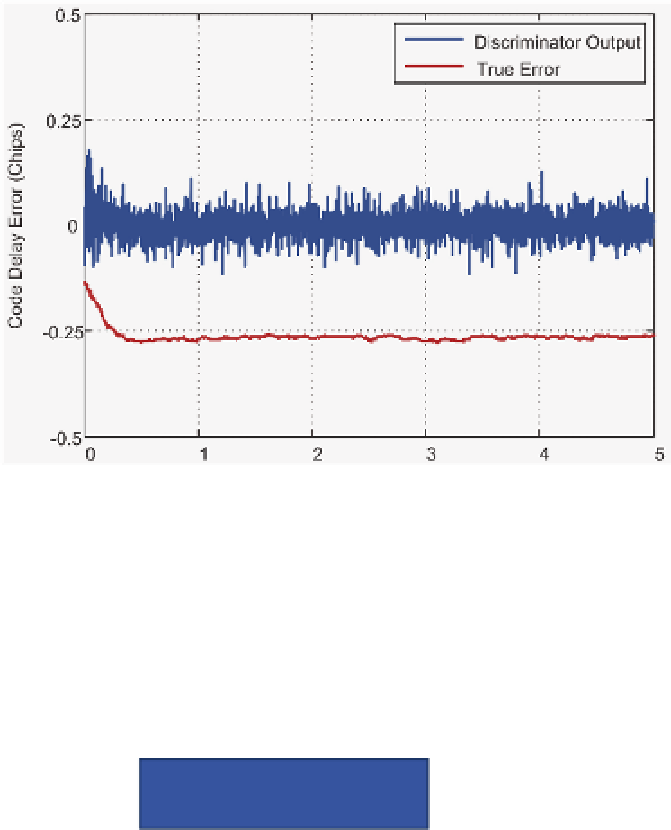Global Positioning System Reference
In-Depth Information
initial code delay bias of 0.14 chips, the loop locks on a false lock point. Although the output
of discriminator hovers around zero and DLL maintains lock, the true code phase
measurement bias is 0.25 chips, which corresponds to 75 m for BOC(2,1) signal. Such a
considerable bias is unacceptable in most of the positioning applications.
Fig. 3. Example of False Lock in Traditional DLL
3. Existing unambiguous processing techniques
During the decade from when BOC modulation was initially proposed to the present time,
several solutions have been proposed to solve the ambiguity problem. In summary, the
elimination of ambiguity threat can be achieved via two ways: false lock detection and
recovery technique, as well as unambiguous processing techniques. More specifically,
considering the operation domain, unambiguous processing can be further classified into
frequency-domain processing and time-domain processing.
Ambiguity Elimination
False Lock
Detection & Recovery
Unambiguous
Processing
Frequency -domain
Processing
Time-domain
Processing
Fig. 4. Existing Ambiguity Elimination Solutions












Search WWH ::

Custom Search